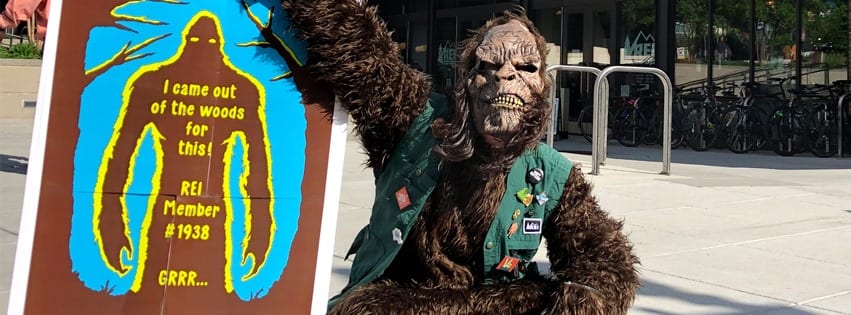The Importance of Creative Expression in Workplace Organizing
SEPTEMBER 24, 2020 | COWORKER.ORG

At Coworker.org, we’re constantly amazed and inspired by the ways that workers use creativity, art and personal expression to create community and build power. But if we’re being honest, it took some time to learn to truly embrace this source of power.
The Forge recently asked organizers a thought-provoking question: “What's the organizing failure that taught you the most about how to organize?”
Organizers: The Forge is planning an upcoming issue on organizing failures. What's the organizing failure that taught you the most about how to organize?
— The Forge: Organizing Strategy and Practice (@ForgeOrganizing) September 10, 2020
Our team at Coworker.org has decades of combined organizing experience and we value learning as paramount to our work, so this question sparked a lot of ideas when we discussed it together. One of our favorite areas of growth (that we shared in this thread on Twitter) is about the importance of placing trust in the innate creativity of workers and the important role that art can play in transformative labor organizing.
There were times we questioned whether some of the creative content ideas developed by worker leaders we've worked alongside were the most strategic, effective or efficient uses of limited time and resources. We've been happily proven wrong many times!
As digital campaigners, best practices often dictate that we think in terms of scale and organize with a return-on-investment mindset—measuring time investments against maximum reach. Or creating content that matches digital design practices developed in the corporate sector. Those practices are built on certain assumptions and for intended audiences that don’t necessarily reflect the people that the worker leaders we support are seeking to engage and inspire.
What we’ve learned is that trusting workers in building cultural and artistic practices through their organizing is good strategy—even if it's what professional organizers are trained to think won't work. Corporate design best practices are alluring, but rarely speak to communities in a meaningful way. Instead, we see our team’s role as supporting workers in expressing themselves without having someone tell them the “right” way to use their voices, or what their words (or other creative interventions!) should say.
Here’s an example: a labor activist from REI Employees for Real Change showed up to the co-op's annual member meeting in 2019 to bring attention to retail workers' demands for changes in their workplace... dressed as Sasquatch. It was a bold choice! We weren't sure how it would go over.
But, as we often find, workers know their audience and what inspires the imaginations of the communities they need to engage. The images proved to be wildly successful with workers and co-op members and have helped them build a stronger community.
And the important decision makers waiting in line for the meeting were eager to read the pamphlets that Sasquatch handed out which were created by REI retail workers to share their stories and demands. (Check out the full package of materials here and learn more about the work of REI Employees for Real Change in this post.)
Another worker leader we've learned from is Rylinda Rhodes. Rylinda is a former Comcast employee who created a campaign on Coworker.org to speak out about harassment she says she experienced while working there. Rylinda is also a poet and has used her art to heal, speak out and inspire others to take action to end workplace sexual harassment. Here's some prose by Rylinda about being a "silence killer."
In Kristie Williams’ popular and successful campaign to allow visible tattoos at Starbucks, it wasn't professionally copywritten petition text or slick graphics that won the campaign, it was baristas speaking out in their own words—and showing off their own tattoo art—that resonated with their coworkers and won the attention of the company. (Read more about this action and how baristas won a dress code change in this post).
Everywhere you look you can find powerful examples of workers using their creativity and artistic impulses to create community and build power—from supporters of museum workers at the Tate Modern using their knowledge of art history to execute a clever guerilla art installation to the dancers of the Portland Stripper Strike pole dancing at their rallies to the poets of the Worker Writers School in New York City—even the countless hilarious memes coworkers create for each other on Reddit. And of course, there’s a long and rich history of artistic practices linked to the labor movement. Labor Arts is a fantastic resource for those interested in exploring a broad range of the artistic and cultural contributions of workers.
Art, creativity, expression—no matter the form or medium—is a critical to healing and transformative organizing. As a staff, we've learned to trust workers' ability to connect with their coworkers and community. Supporting their creative visions is integral to being worker-led.

